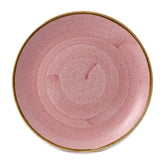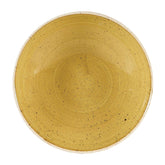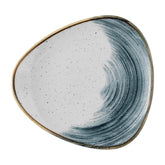Mastering the Art of Food Presentation

Elevating your commercial kitchen culinary creations
In the world of culinary arts, food presentation plays a crucial role in enticing and satisfying diners. A beautifully plated dish not only appeals to the eyes but also enhances the overall dining experience. In commercial kitchens, where the art of presentation is taken to a professional level, mastering the techniques of food presentation can make a significant difference in the success of a restaurant or catering business.
Effective food presentation goes beyond arranging food on a plate; it is an art that requires careful consideration of colours, textures, shapes, and balance. When done right, it can create a lasting impression on customers and elevate their perception of the food's taste and quality. In a competitive industry, where customers have numerous choices, a visually appealing dish can be the key to attracting customers and setting a restaurant apart from the rest.
The psychology behind food presentation and its impact on diners
The way a dish is presented can have a profound psychological impact on diners. Research shows that visual cues significantly influence our perception of taste and satisfaction. When food is presented in an aesthetically pleasing manner, it triggers a positive response in the brain, creating anticipation and excitement. This anticipation can heighten the entire dining experience, making it more enjoyable and memorable for the customers.
Food presentation also plays a role in conveying the brand identity and values of a restaurant. The style, colours, and arrangement of the dishes can reflect the restaurant's creativity, attention to detail, an commitment to quality. A well presented dish can communicate professionalism, expertise, and care, which can build trust and loyalty among customers.
Elements of effective food presentation
To master the art of food presentation, chefs need to understand and utilise the key elements that contribute to an effective presentation. These elements include:
- Colours: Using vibrant and contrasting colours can make a dish visually appealing. Chefs can incorporate colourful ingredients and garnishes to create a visually stimulating plate.
- Textures: Combining different textures, such as crispy, crunchy, creamy, and smooth, can add depth and interest to a dish. Chefs can experiment with various cooking techniques and ingredients to create a harmonious blend of textures.
- Shapes: Playing with shapes and forms can make a dish visually striking. Chefs can use moulds, cutters and plating techniques to create geometric shapes or artistic arrangements that catch the eye.
- Balance: Achieving a balance between the different components of a dish is crucial for a visual weight of each element to create a well-balanced plate.
- Negative space: Leaving empty spaces on the plate, also known as negative space, can enhance the visual impact of the dish. It provides breathing room for the elements and allows the focus to be on the key components of the dish.
By incorporating these elements into their plating techniques, chefs can create visually stunning dishes that captivate diners and elevate their culinary creations
Chef plating techniques to elevate your culinary creations
Chef plating techniques are the secret behind those Instagram-worthy dishes that leave diners in awe. These techniques involve careful placement, artistic arrangements, and attention to detail. Here are some popular chef plating techniques that can help elevate your culinary creations:
- Stack and layer: This technique involves stacking different components of a dish in an aesthetically pleasing manner. Chefs can layer ingredients, such as proteins, vegetables, and grains, to create a visually appealing tower or stack.
- The art of sauces: Sauces not only add flavour but also serve as a decorative element in food presentation. Chefs can use squeeze bottles or artistic drizzling techniques to create a beautiful patterns or designs with sauces on the plate.
- The rule of odds: The rule of odds suggests that odd numbers of elements on a plate create a more visually appealing composition. Chefs can arrange ingredients in groups of three or five to create a sense of balance and harmony.
- Edible decorations: Edible decorations, such as microgreens, edible flowers, or flavoured powders, can add an extra touch of elegance to a dish. Chefs can strategically place these decorations to enhance the visual appeal without compromising on taste
- Sculptural plating: Sculptural plating involves creating artistic shapes or structures with the food. Chefs can mould ingredients into unique shapes or use food rings to create visually stunning presentations.
By incorporating these plating techniques into their culinary repertoire, chefs can take their dishes to a whole new level and amaze diners with their artistic flair.
Common mistakes to avoid when plating dishes
While mastering the art of food presentation, it is essential to be aware of common mistakes that can detract from overall visual appeal of a dish. Here are some mistakes to avoid when plating dishes:
- Overcrowding the plate: Overcrowding the plate with too many components can make a dish look messy and unappealing. Chefs should leave enough space between the ingredients to allow each element to shine.
- Uneven portioning: Uneven portioning can disrupt the visual balance of a dish. Chefs should ensure that each component is proportioned properly to create a visually pleasing presentation.
- Lack of contrast: A lack of contrast in colours, textures, or flavours can make a dish appear dull and interesting. Chefs should aim to incorporate contrasting elements to create visual interest and excitement.
- Inconsistent plating: Inconsistent plating can make a dish look haphazard and unprofessional. Chefs should strive for consistency in their plating techniques, ensuring that each dish is presented with meticulous attention to detail.
By avoiding these common mistakes, chefs can maintain the integrity of their culinary creations and present dishes that are visually captivating and appetising.
Enhancing plate presentation with garnishes and sauces
Garnishes and sauces are valuable tools in enhancing the plate presentation of a dish. They add visual interest, texture, and flavour, elevating the overall dining experience. Here are some ways to enhance plate presentation with garnishes and sauces.
- Fresh herbs: Sprigs of fresh herbs, such as basil, cilantro, or parsley, can add a pop of colour and freshness to a dish. Chefs can strategically place these herbs as a garnish to create visual appeal.
- Microgreens: Microgreens are tiny, delicate greens that pack a punch of flavour and visual interest. Chefs can sprinkle microgreens on the plate to add a touch of elegance and sophistication.
- Edible flowers: Edible flowers, such as pansies or nasturtiums, can add a touch of whimsy and beauty to a dish. Chefs can use them as a garnish to create a visually stunning presentation.
- Sauce artistry: Sauces can used not only for flavour but also as a decorative element. Chefs can use squeeze bottles or artistic drizzling techniques to create intricate patterns or designs on the plate.
By incorporating garnishes and sauces creatively, chefs can transform a simple dish into a work of art, leaving diners impressed and eager to indulge.

Tools and equipment for professional food presentation
To achieve professional-level food presentation, chefs need the right tools and equipment. Here are some essential tools and equipment for professional food presentation:
- Plating tweezers: Plating tweezers allow chefs to have precise control over placement of delicate ingredients. They are invaluable when it come to arranging small components or intricate garnishes.
- Food rings: Food rings, also known as culinary rings or plating rings, are used to create perfectly shaped portions on the plate. They ensure consistency and precision in plating techniques.
- Offset spatula: An offset spatula is a versatile tool that helps chefs spread sauces, create smooth surfaces, and arrange delicate elements on the plate. It provides precision and control during the plating process.
- Squeeze bottles: Squeeze bottles are essential for creating intricate sauce designs or artistic drizzles. They will allow chefs to have control over the flow and pattern of the sauce, resulting in visually appealing presentations.
- Garnishing tools: Garnishing tools, such as herb strippers, zesters, or melon ballers, help chefs create decorative elements and finesse to their dishes. These tools allow for precision and creativity in garnishing techniques.
Investing in these tools and equipment can significantly enhance a chefs ability to create visually stunning and professional looking plates.
Incorporating creativity and innovation in food presentation
While mastering the art of food presentation requires understanding the fundamental techniques, creativity and innovation are what set exceptional chefs apart. Here are some ways to incorporate creativity and innovation in food presentation:
- Fusion of culinary cultures: Chefs can draw inspiration from different culinary cultures and fuse them together to create unique and visually striking dishes. By combining flavours, techniques, and presentation styles, chefs can create dishes that are both familiar and innovative.
- Play with texture: Experimenting with textures can add an element of surprise and delight to a dish. Chefs can incorporate unexpected textures, such as crispy elements in a creamy dish or a velvety sauce on a crunchy base, to create a memorable dining experience.
- Molecular gastronomy: Molecular gastronomy is a culinary approach that combines science and art to create innovative dishes. Chefs can explore techniques like sphecification, foams, or gels to create visually stunning and avant-garde presentations.
- Storytelling through food: Chefs can weave a narrative through their dishes by incorporating elements that tell a story. This could be inspired by a particular culture, season, or personal experience. By creating a connection between food and the diner, chefs can enhance the overall dining experience.
By embracing creativity and innovation, chefs can push the boundaries of food presentation and create dishes that are not visually captivating but also thought-provoking and memorable.
Elevating your culinary creations through food presentation
Food presentation is an art that requires a combination of technical skill, creativity, and attention to detail. In commercial kitchens, mastering the art of food presentation is essential for creating visually stunning and appetising dishes that leave a lasting impression on diners.
By understanding the psychology behind food presentation, utilising the key elements of effective presentation, and incorporating chef plating techniques, chefs can elevate their culinary creations to new heights. Avoiding common mistakes, enhancing plate presentation with garnishes and sauces, and using the right tools and equipment are also crucial for achieving professional level food presentation.
Furthermore, incorporating creativity and innovation, seeking specialised training and courses, and staying updated with industry trends are essential for continuous improvement in food presentation skills.
Remember, food presentation is not just about making a dish look good; it is about creating an immersive and memorable dining experience for customers. So, embrace the art of food presentation, and let your culinary creations shine.






